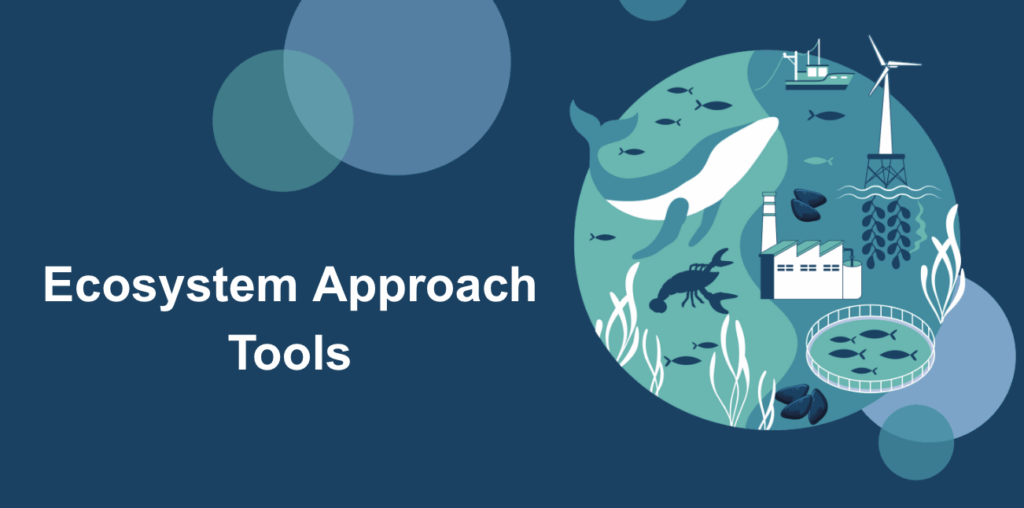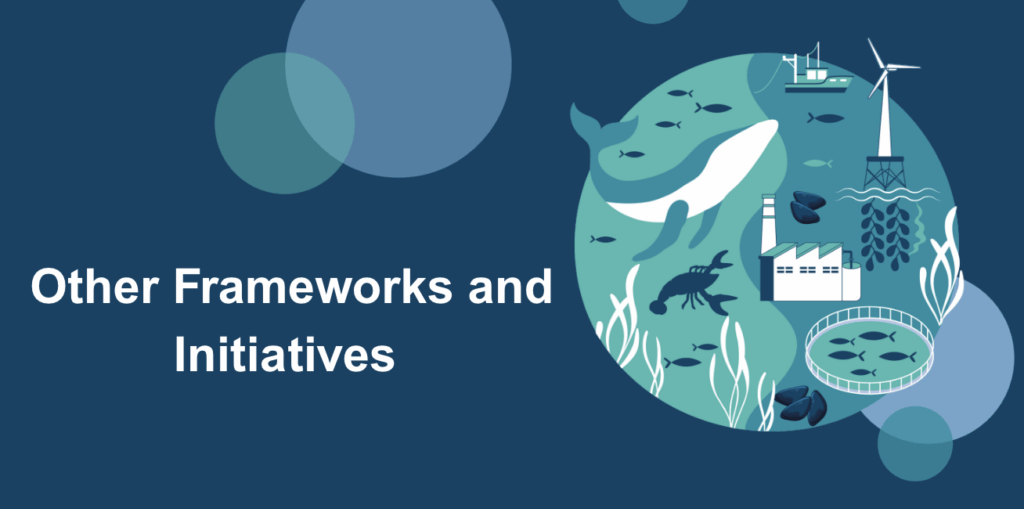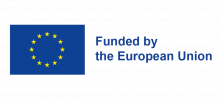The next sections discuss several Ecosystem Approach tools and frameworks and indicate whether blue bioeconomy companies can directly apply them or have to rely on external consultants or university guidance. The booklet “Case studies on Ecosystem Approach in Blue Bio Economy” showcases companies using an EA framework or Ecosystem Services Valorisation tool and how it has benefited or helped the company in further development of activities. Deeper insights on Ecosystem approach for Bluebio companies can be found in our handbook.

MESAT
MESAT is a qualitative and semi-quantitative tool that evaluates the impact of marine projects on 9 different ecosystem services according to different international sustainability frameworks (SDGs, EU Taxonomy). MESAT links sustainability (through internationally used sustainability frameworks) and the relevant ecosystem services in the blue economy. MESAT is a living tool, i.e. there will be periodic updates so that MESAT always follows the latest legislation and sustainability principles. (https://emelia.be/advies-studies/duurzaamheid/mesat/).
NESEV
This cloud-based platform is designed to conceptualise and assess ecosystems as multi-layered networks depicting all their dimensions: natural, social, and economic. The model exhibits properties of self-organisation and scalability, similar to natural ecosystems. In this broad framework, all participants, actors, or organisms can engage in reciprocal interactions (services) (https://haedes.eu/tools/).
SUMES
The SUMES project developed a comprehensive environmental sustainability assessment methodology to quantify both the positive (handprint) and negative (footprint) impacts of blue economy activities across different geographical scales. This approach integrates Life Cycle Assessment (LCA) and Ecosystem Services assessment (ESA) to provide a holistic evaluation (https://sumesproject.be/en).
Sustainability Compass framework
The Sustainability Compass is a framework that promotes transdisciplinary social learning for sustainability, aiming to bridge the gaps between science, policy, and society in the pursuit of the SDGs. It uses multidimensional indicators to assess the social, economic, and environmental impacts of different sectors, focusing on human well-being within ecosystem limits. By fostering participatory, evidence-based decision-making, the Compass encourages stakeholders to engage in shared learning processes, ensuring more effective and integrated approaches to sustainability.
Blue Bio Sites
The Blue Bio Sites portal hosts multiple tools to support the sustainability of aquaculture and marine spatial planning. Among these, the Operational Decision Support System (ODSS) is a web-based platform designed to assist in the planning and implementation of low-trophic aquaculture activities, such as mussel and seaweed farming, particularly in the Baltic Sea region. By integrating environmental data, spatial analyses, and predictive models, the ODSS enables users, including spatial planners, policymakers, and aquaculture practitioners, to make informed decisions about site selection and management for sustainable aquaculture development (https://gis.sea.ee/bluebiosites/).
Toolkit for Ecosystem Service Site-based Assessments (TESSA)
TESSA offers a guided, step-by-step method to assess the value of ecosystem services at specific sites, such as aquaculture farms or marine installations. TESSA is qualitative and semi-quantitative, requiring minimal technical knowledge and no specialised software. This makes it ideal for small and medium-sized blue bio companies and cooperatives looking to evaluate services like water filtration or coastal protection without heavy reliance on consultants. However, companies aiming to use it for certification or funding purposes may still benefit from validation by sustainability advisors (https://www.birdlife.org/tessa-tools/).
Integrated Valuation of Ecosystem Services and Tradeoffs (InVEST)
InVEST, developed by the Natural Capital Project, is a well-established modelling suite with some marine-specific modules. It includes modules specifically adapted to marine settings, such as the Marine InVEST models, and enables users to simulate and map changes in ecosystem service provision under different scenarios – such as comparing seaweed farm layouts or estimating nitrogen removal by shellfish beds. While InVEST is freely available, it requires GIS skills and ecological data inputs, meaning blue bio companies typically apply it through consultancy support or research partnerships. The investment in expertise is often justified for larger firms or clusters involved in coastal zone planning or impact monitoring. (https://naturalcapitalproject.stanford.edu/software/invest)
Artificial Intelligence for Ecosystem Services (ARIES)
ARIES offers a more automated, AI-driven modelling approach. It dynamically selects and connects models and datasets depending on user queries and location. While it reduces the modelling burden, it still demands a working understanding of ecological processes and benefits most from interpretation by academic or consulting partners. For companies involved in landscape- or seascape-scale planning, such as marine ingredient suppliers or multi-site aquaculture developers, ARIES can provide rich insights into ecosystem flows and cumulative impacts when applied in collaboration with experts. (https://aries.integratedmodelling.org/)
EA Ladder
The Ecosystem Approach (EA) Ladder is a framework that encourages blue economy companies to engage in an EA by assessing their level of commitment to improving their impacts on ecosystemsand the services these ecosystems deliver, based on continuous improvement. The ladder consists of four levels, with increasing requirements on insights into ecosystem impacts, setting targets, installing measures to improve impacts, and transparency. For each level, three dimensions are evaluated: insight, commitment and communication. As a company moves up the ladder, assessments and commitments move from qualitative to quantitative, and the targets to be achieved, as well as communication and collaboration, need to be intensified. Additionally, the focus shifts from one’s own operations to the value chain. See also section 3 for a more detailed description.

Science-Based Targets for Nature (SBTN)
SBTN is a framework under development that guides companies in setting measurable targets to reduce their natural impacts. While full marine sector guidance is still emerging, the structure is highly relevant to blue bio companies that aim to align with science-driven environmental commitments. Applying SBTN currently requires significant data and methodological input and is generally pursued in collaboration with expert groups, such as NGOs, academic partners, or sustainability certifiers (https://sciencebasedtargetsnetwork.org/).
Seafood Measurement and Accountability for Performance (MAP)
Seafood MAP, developed by the Global Sustainable Seafood Initiative, is specifically designed for seafood-producing companies. It provides a self-assessment platform and sustainability benchmarking tool that includes environmental impact areas relevant to ecosystem services. It is relatively user-friendly and structured for businesses, making it accessible to companies without advanced modelling skills. It can also help companies move toward ESG or certification alignment while tracking progress toward biodiversity and ecosystem goals. (https://seafoodmap.org/)
EcoVadis
EcoVadis is a global sustainability rating platform that evaluates companies based on their environmental, social, and governance (ESG) performance. For blue bioeconomy companies, EcoVadis is particularly relevant for assessing and improving the overall sustainability of operations. It includes criteria such as environmental management, supply chain sustainability, and business ethics, all of which intersect with ecosystem services, particularly when considering the impacts of marine resource extraction or aquaculture practices. Although EcoVadis does not specifically focus on ecosystem services, its broad ESG evaluation process can be useful for companies looking to gain third-party recognition for their sustainability efforts, especially in their supply chains (https://ecovadis.com/).
B Corp
B Corp certification is awarded to companies that meet rigorous standards of social and environmental performance, accountability, and transparency. This certification can be valuable for blue bio businesses if they want to signal their commitment to sustainable practices and ethical operations. The B Corp certification evaluates a company’s entire impact on stakeholders, including ecosystems, though its focus is broader than just ecosystem services. However, businesses in the blue bio sector can use this framework to demonstrate their commitment to sustainable marine and aquatic resource management, which is often crucial for securing funding (https://www.bcorporation.net/en-us/certification/).
CDP (formerly known as the Carbon Disclosure Project)
CDP is a global environmental disclosure platform that allows companies to report on their environmental impacts, including climate change, water security, and deforestation. For Blue Bio companies, participating in CDP can help track and disclose their environmental impact, particularly in relation to water use, carbon sequestration, and the impacts of marine-based activities. While CDP does not focus directly on ecosystem services, it plays a key role in driving transparency and accountability around environmental performance. For companies in the blue bioeconomy, CDP participation could be part of their broader sustainability reporting efforts and help improve their relationship with stakeholders who are increasingly concerned with environmental impacts (https://www.cdp.net/en).



